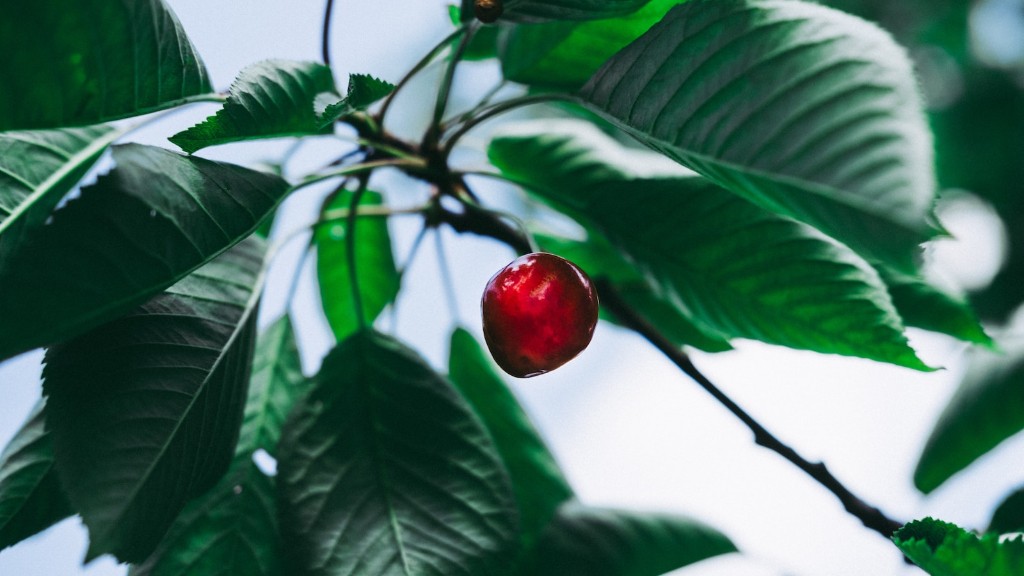Painting a lemon tree can seem daunting at first glance, but with a bit of creative insight and the right tools, you can create a beautiful, vibrant watercolor painting of a lemon tree. Here are the steps to follow to successfully paint your own lemon tree:
Start by gathering your supplies. You will need watercolor paints, a paintbrush, water, and paper. Once you have your supplies, it’s time to get started. Begin by getting your paper damp using the water, then letting it dry before you start painting.
Once the paper is ready, you can begin to make sketches of your painting. Start by sketching the overall shape of the tree, then zooming in and adding details like the leaves, stem, and fruit. You can then start to add color to your painting. Choose colors that are appropriate for the type of tree you are painting. For example, if you are painting a lemon tree, a light green, yellow, and orange will work well.
Once the colors are applied, use lighter colors to create a depth and texture to the painting. You can also add highlights to the branches and leaves by adding a bit of whiteness to each. If you are going for a more realistic look, use more saturation for the colors and less for the shadows.
When you are satisfied with the overall look of the painting, use a damp brush to soften any hard edges and complete the painting. When the painting is finished, be sure to mount it on a board or frame to keep it safe. You can also use a sealant to protect the paint.
These steps will help you create your own lemon tree painting. With a bit of creativity and the right supplies, you can create a beautiful, vibrant painting that you can proudly display in your home.
Adding Light and Shadow Effects to Your Lemon Tree Painting
Adding light and shadow effects to your lemon tree painting will create a more vibrant, lifelike painting. The light is often the most important part of a painting and will create a three-dimensional look. To create light and shadows, you can use highlights and lowlights. Highlight colors should be a bit brighter and lowlights should be a bit darker. You can also use contrast to create depth.
Highlighting your painting with white and light colors will bring it out of the background and make it stand out. You can add a light source from below or from the side, depending on the look you are going for. Lowlighting your painting with dark colors will provide contrast and interest. The shadows will make your painting more realistic and give it dimension.
You can also use texture to add interest to your painting. Rough texture will make your painting appear more textured and lifelike. You can do this by adding brushstrokes or using a textured paper. Light colors will appear brighter against dark colors, and dark colors will appear deeper against light colors. Combining textures with colors will help increase the focus of your painting, as well as create a contrast.
When you have created the light and shadows of your painting, you can use a damp brush to soften the edges and add highlights and lowlights. This technique is also useful for blending colors. Use a dry brush for contrast, and a wet brush for smoother effects.
By following these steps, you will be able to create light and shadow effects that will bring your lemon tree painting to life. With the right colors and the right techniques, you can create a beautiful, vibrant painting that captures the beauty of the natural world.
Adding Details to Your Lemon Tree Painting
Adding details to your lemon tree painting will make it even more realistic. Start by adding the stem and branches of the tree. Make sure to draw them accurately so that the painting looks natural. Use shadows to create depth, as well as texture. For example, you can use light colors for highlights and dark colors for shadows.
Once the branches are in place, you can add the leaves. Choose colors that are appropriate for the type of tree you are painting. For a lemon tree, use light greens, yellows, and oranges. Start by painting in the outline of the leaves and then adding shadows and highlights to create depth. You can also add veins or any other details you wish to make it look more realistic.
Once the leaves are in place, you can add the fruit. Again, use colors that are appropriate for the type of tree you are painting. Start by adding the outline of the fruit and then use textures and shadows to bring it out of the background. You can also use highlights to give the fruit more dimension.
Once you have finished the painting, you can use a sealant to protect it. You can also add a frame or choose to mount it on a board. By following these steps, and adding details to your painting, you can create an amazing work of art that captures the beauty of nature.
Adding Background to Your Lemon Tree Painting
Adding a background to your lemon tree painting will help to create an interesting and cozy atmosphere. Start by choosing colors that are appropriate for the type of tree you are painting. For example, if you are painting a lemon tree, you can use light blues and greens. You can even add highlights and lowlights to make it more interesting.
Once you have chosen the colors, use a damp brush to create soft, blurred edges. You can also use a wet brush to add texture and details to your painting. You can also add shadows with darker colors and highlights with lighter colors.
When you have finished adding details, use a dry brush to soften the edges. You can use a damp brush and light colors to add highlights and a darker color and wet brush to add shadows. This will help create a lifelike image.
Finally, you can add objects like trees, clouds, or houses to the background to create a story. These objects should be subtle enough for the lemon tree to still be the center of attention. Be sure to use lighter colors so that the background does not distract from the focus of the painting.
By following these steps, you can create a beautiful background for your lemon tree painting. With a bit of creativity and the right supplies, you can create an amazing work of art that will bring life to your home.
Adding a Frame to Your Lemon Tree Painting
Adding a frame to your lemon tree painting can give it a more professional and polished look, as well as protect it from damage. Start by choosing a frame that is appropriate for the size of your painting. You can choose a classic or modern frame, or take a DIY approach and make your own.
Once you have chosen the frame, you can measure the painting and cut out a mat. This will help to make the painting stand out and give it a more finished look. When you are done cutting the mat, you can mount the painting onto the mat and into the frame.
You can also add a sealant to protect the painting. This will help protect it from moisture and damage. You can also use a spacer between the painting and the frame to prevent scratches or dings.
By following these steps, you can easily create a frame for your lemon tree painting. With the right materials, you can create a beautiful and unique frame that will help protect and enhance your painting.
Hanging Your Lemon Tree Painting
Hanging your lemon tree painting can be an easy and rewarding task if you follow the right steps. First, you need to find a spot in your home that will be the best place to hang it. Consider the lighting of the room and how it will affect the painting.
Once you have chosen the spot, you need to measure the space available and find a hook or nail to hang it on. You can use wall anchors for heavy-duty frames. Don’t forget to leave enough space for the frame to hang freely. If you are using nails, make sure to use a stud-finder to find where the wall studs are located.
When you are ready, lift the painting up to the wall and use a level to ensure it hangs straight. If you are hanging the painting over furniture, be sure to use appropriate brackets. When you have finished, step back and admire your work.
By following these steps, you can easily and safely hang your lemon tree painting. With the right supplies and the right approach, you can create a beautiful and eye-catching piece in no time.




